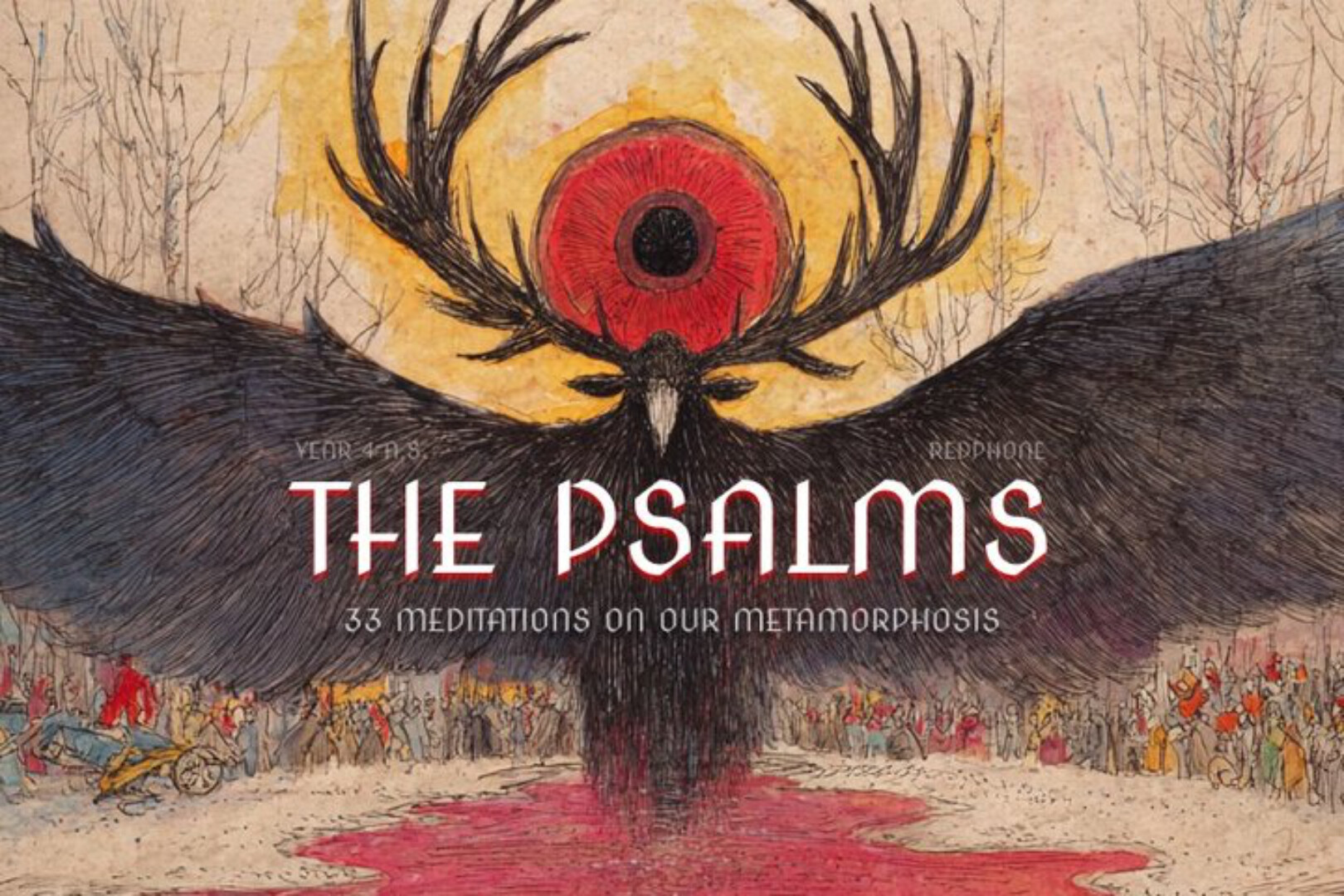ZONFF Research: The development status and future prospects of SocialFi 1.0 to 2.0
Original author:
Original author:Victoria
In 2021, Binance CEO Changpeng Zhao CZ published an article on the "Fortune" India platform, claiming that more traditional financial institutions will invest in the Crypto field in 22 years. In addition, as SocialFi and GameFi become the key driving force for institutions to enter the market , we are likely to continue to see vigorous innovation in '22.
first level title
The ups and downs of SocialFi 1.0
need
need
French sociologist Tarde pointed out in his book "The Law of Imitation", "In the process of human change, there are few new inventions, and more are transformations and imitations."
What is innovation? Innovation can be to solve old problems, or to create new needs to solve new problems. The existence of Web3 social networking can solve the old problems of Web2, but it does not stop there. Web3 is also creating new requirements to solve new problems. Most of the SocialFi 1.0 projects are not just a replacement for Web2 social products, but more of a combination of social networking and financial attributes on the blockchain platform. The current relatively mature definition of the term SocialFi aims to provide users with benefits and transparency through financialization and the influence of social networks, that is, the perfect combination of Social Network and Money Effect.
Furthermore, the existence of Web3 social networking can also solve some existing problems of Web2 social networking, including but not limited to:The Web2 social relationship is attached to the centralized platform/closed ecosystem + the created content is stored on the platform + user data is owned by the platform + the profit model is allocated by the platform + the value of creators cannot be reflected.In the age of Web2, the algorithms of social media define who we are friends with, what activities we like, what kind of content we like to watch, and so on.
Benedict Evans in "The Death of Facebook's NewsFeed" writes: "All social apps grow until you need a Newsfeed. All Newsfeeds grow until you need an algorithm-driven Newsfeed. All algorithm-driven The NewsFeed all grows until you get tired of not seeing stuff/seeing the wrong stuff and move on to a newer app that's less overloaded and smaller. Then the new app grows too until you need a News Feed".
Using blockchain technology, Web3 social networking has also formed the following three major value propositions, which are different from centralized social networking and three characteristics, in order to solve the problems of traditional social networking:
Data Ownership:Traditional social media platforms collect and store as much user data as possible, and store it on the operator's server in the form of fields, and the data belongs to the platform, while decentralized social media makes the data right return to the user itself, data and on-chain activities Open and transparent, if any platform wants to use or track data and activity history, it needs the user's consent and charges. Blockchain technology, non-tamperable data characteristics make the collection of user data more transparent and make it impossible to cheat.
Benefit distribution/incentive mechanism:In general, social media platforms make money from advertising. These platforms benefit from traffic and user engagement. In return, users can only benefit from using the platform. The emergence of SocialFi is an attempt to DeFi the social economy, and the issuer directly connects with participants through social tokens and benefits from it. At the same time, creators obtain income by financializing their social influence, and there is no problem of third-party commissions such as platforms.
User Authorization (Privacy/Security):In traditional social networks, each account registration requires user information, such as mobile phone numbers, email addresses, etc., and these data are centrally stored in the server systems of these platforms. The information stored in the background of the operator is extremely easy to leak, and there is a risk of being attacked (the data leak incident in Shanghai in July 2022 has further enhanced traditional users' awareness of privacy and security). SocialFi's decentralized aggregation can help the content of multiple social networking platforms to be shared, transferred, etc., helping to protect the privacy and security of user information.
secondary title

investment history
Looking back over the past few centuries, the phenomenon of "capital depressions" has repeatedly appeared in the world. Whichever country becomes a global capital depression has the conditions to rise. The flow of capital can often summarize some hot spots and new trends.
Around 2017, a large number of blockchain + social projects emerged in batches, such as Steem, Voice, ONO, QunQun, GSC, YeeCall, NRC, SwagChain, Huoxin, TTC Protocol and other star projects. However, in the early immature market environment, limited user participation, and limitations of the ecological model, many projects have disappeared. After 2020, the era of DeFi began, and NFTFi and GameFi broke out one after another. Under the influence of open financial concepts and liquidity mining methods, SocialFi 1.0 also began to transform from "Social + Finance" to "Social + DeFi".
Around 2021, a wider range of Web3 players will join the wave of the new era, and more social and entertainment application projects will emerge (especially the explosion of Axie in 2021 will also drive some attention to social networking). In terms of the speed of change in the blockchain world, SocialFi should also change with each passing day. According to Footprint Analytics, SocialFi raised $392 million in 2020.
secondary title
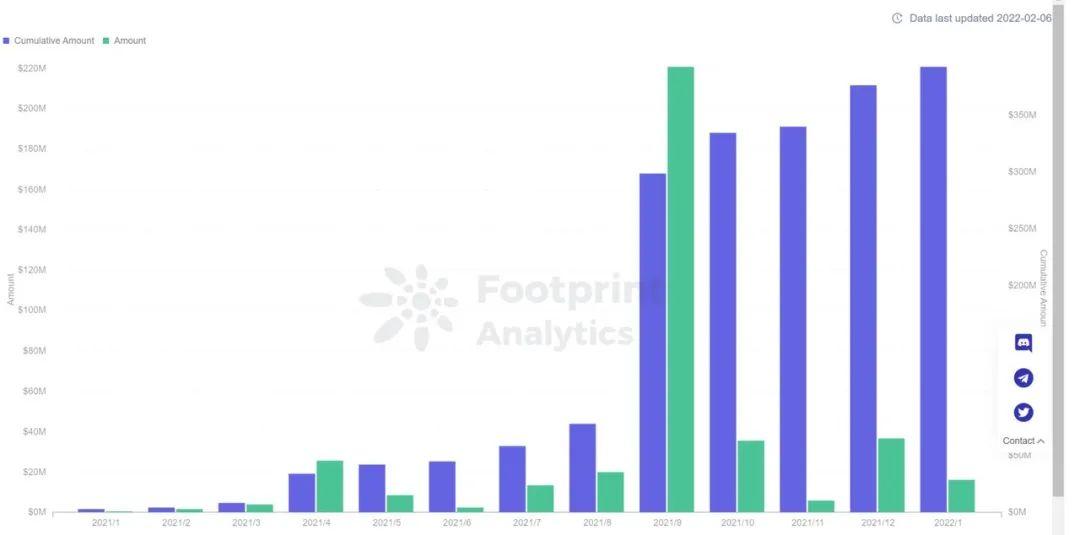
structure
From the perspective of capital enthusiasm and demand-side conditions, the mainstream narrative and investment opportunities of SocialFi 1.0 are mainly concentrated in these three areas:
Infrastructure tools and middleware and protocol classes:
Representative projects such as: Mask Network, RSS3, 5 Degrees, Mem Protocols, Likecoin, Snapshot, Lens Protocols, Collab Land, CyberConnect, Project Galaxy, etc.;
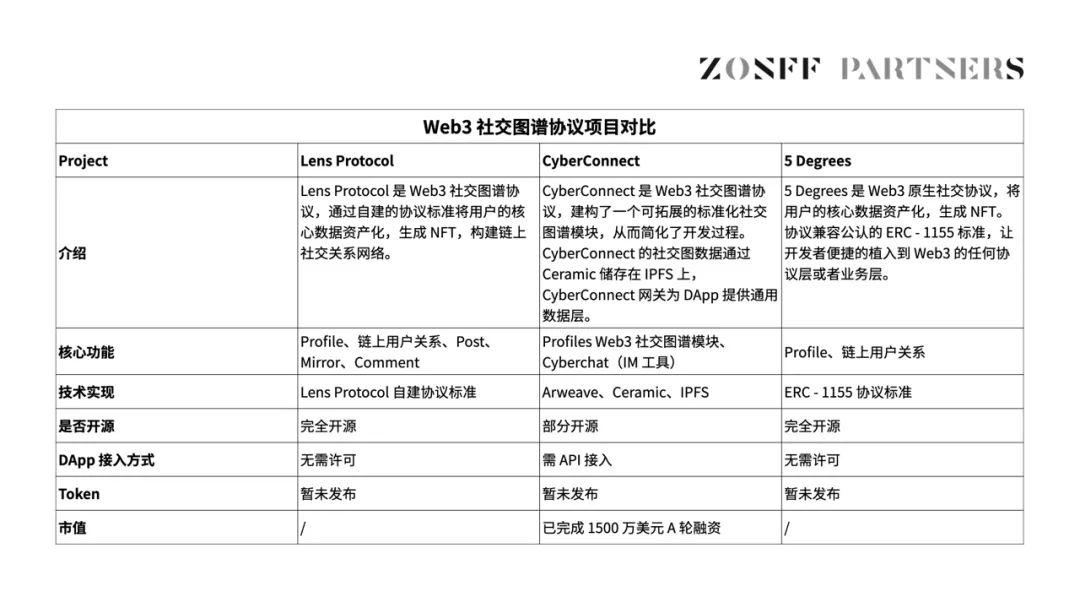
Each article talks about Lens, Cyber, PG and other above projects. Here we will not repeat the fundamentals, but focus on the different points of those projects back then:
The representative project that proposed on-chain behavioral memory earlier than V God’s SBT narrative is POAP. Since its launch in ETH Denver in 2017 and its establishment in 2021, POAP has penetrated into Web3 social culture for a while. Proof of Attendance Protocol POAP is a certificate application on the NFT chain, which records everyone's life imprint on the chain. Whenever users perform relevant online and offline activities, they will have the opportunity to obtain a uniquely designed badge as authentication. The badge will also become a traceable, indivisible and non-tamperable digital collection on the chain. POAP does not do Marketplace, it is equivalent to creating this subdivision field, and it is more professional. The following Galaxy expanded the POAP protocol on this basis. The project has now partnered with Warner Music Group in April 2022 to begin releasing the POAP label for musicians at concerts. To date, more than 4.5 million POAPs have been issued to more than 500,000 POAP collectors.
The on-chain behavior qualification of Project Galaxy has opened up a new space for the SocialFi 1.0 social graph protocol, leading a wave of new hotspots. Later projects that do similar things emerge in an endless stream: more Web3 DApp APIs are connected to Galaxy, and some on-chain data requires data Organized, the data is relatively crushed by Rabbithole (obsessed with Ethereum) and POAP (mainly based on ETH), because it supports multi-chain ecology, and can synthesize compound behaviors on different chains to make people's portraits more three-dimensional and complete. At the same time, the same The account receives the rights and interests of different accounts to realize the binding of multiple identities. Another CyberConnect, founded in 2021, is also a social graph on the chain. The social module has the functions of "follow button" and "follower list". All social graph data is open to the public, but the ownership and management rights are in the hands of users themselves. However, CyberConnect itself is not a smart contract. The content is stored on IPFS, which has a high learning cost for developers and users. There is no frequent Gas fee, and the content is stored permanently. However, with the deepening of product construction, neither of them has formed a good accumulation of raw data. Gleam's data index has some defects, and Cyber also lacks upstream data. In the future, they both hope to cooperate with social data oracles. SocialFi 2.0 may have some projects of this type.
Another big new social graph narrative that will explode in 2021 is Lens Protocol. The project only established social connections in the early stage, and there is still a certain distance from the real social graph. Developers need to grasp the data on the chain (currently most Developers use The Graph), and then use the database to restore, allowing complex logical queries, and this requires a certain cost. And the problem that Lens was criticized by everyone in the early days is that each design requires high gas fees, and users have to worry about paying fees, and the confirmation pop-up box of the user wallet appears frequently or requires a signature. This is undoubtedly a big obstacle for user experience. For a better user experience, and whether a middleware further than The Graph is needed in the future to handle the graph database of community relations on the chain, Lens Protocol has given a new solution at the stage of entering SocialFi 2.0.
Decentralized content social streaming media (Media DApp)/NFT subscription and other platform tools:
Representative projects such as: Bluesky, BitClout, BBS Network, Monaco Yacht, Subsocial, myMessage, ShowMe, Theta decentralized video, Audius decentralized audio, Joystream, Mirror, Cent, Yup, Matataki, SWAGG, Entre, Nafter, Mastodon, etc. ;
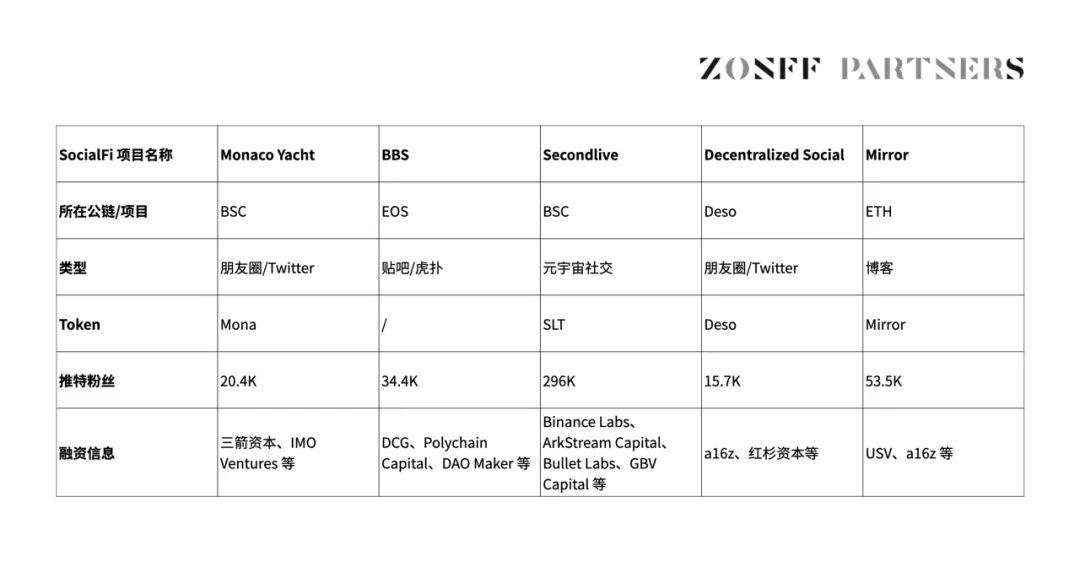
These projects all have different descriptions of various articles, so I won’t describe them in detail here
More noteworthy narratives:
Decentralized content social streaming media includes content creation + media platforms running on public blockchains, unlike traditional completely independent centralized social media platforms, whose data servers are controlled by specific companies. We commonly use WeChat, WeChat The same goes for blogging, Instagram, Facebook, TikTok, etc., the data doesn't really belong to us. In contrast, decentralized projects in this category will largely enable anyone, anywhere to run nodes, access backends, create applications, and manage feed streams;
The streaming media project with a relatively high volume in 21 years is Monaco Planet (content mining), and it is also the only domestic project that has entered the market with three arrows (which further contributed to the investment boom of SocialFi 1.0 at that time). Monaco Yacht's project positioning is Twitter in the Web3 field. Users can send videos, pictures, and texts on Monaco for social networking, and support likes, comments, forwarding, and sharing. NFT display and Staking operations can obtain the platform's native token MONA. One of the reasons for Monaco's early explosion is the Yacht NFT issued. Only users who have purchased Yacht NFT can get Monaco's first experience code and sharing code (well versed in the traffic effect of Web3). After the Monaco Beta version was launched, the community was detonated, and the platform access invitation code was fired to more than a hundred dollars. However, because the algorithm for obtaining tokens is too simple and rough, it is impossible to maintain high-quality content for a long time. Users only want to gain attention, resulting in too single social content, and the value capture of Token is weak. Encountered word of mouth Waterloo. But as a content media platform, the project has created a precedent for the subsequent SocialFi 2.0 creator economy related fields.
Social token token issuance platform class:
The early projects of SocialFi 1.0 were mostly token issuance, that is, the core value of SocialFi at that time was Social Token. According to different Token types, it is divided into Personal Tokens, Community Tokens, and Social Platform Tokens, each of which has a representative project. Social tokens, personal tokens issued by users that carry proprietary information and established access rights, community tokens (community tokens) issued by organizations to establish connections between members, governance platform tokens are the foundation of the organization .
Personal tokens:Token holders can access the early fan base, have discounts or early participation in activities, obtain goods, NFT, etc., a symbol of status or connection participation, and early creators or entrepreneurs will receive economic returns;
For example: RAC, ROLL, Whale, MeTokens, MintGate
Community tokens (social platform tokens):Token holders can have all the benefits of individual token holders, plus DAO's governance mechanism and its influence in the ecological niche community, asset rental or income sources for services provided by the community;
Examples: Karma DAO, Friends with Benefits, Forefront, Flamingo, DeepDAO
Minting and distribution platform currency:The governance capability of the social platform comes from the cost of the transaction or platform burning mechanism, and the financial benefits brought about by the growth of social tokens issued on the platform;
Examples: Chilliz, Zora, CircleUBI, Fyooz
first level title
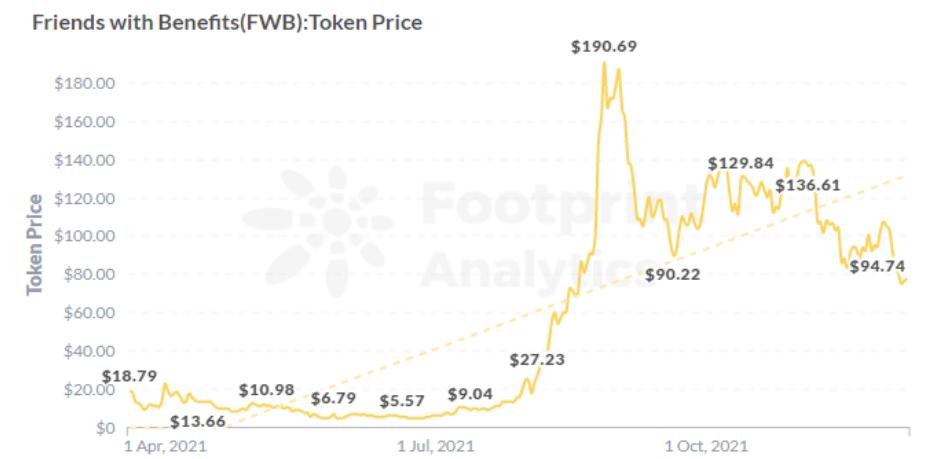

Three defining moments for SocialFi in 2022
SocialFi 1.0 is the beginning of Web3 social networking. While many projects are ups and downs, they also exposed some problems that the industry needs to solve urgently, such as:
1) The user is too single, and the portrait does not have diversity: SocialFi 1.0 is more trying to solve the existing problems of Web3 social networking, and there is not much consideration of interactive layer thinking, and it has not really understood users, nor has it considered User portraits and groups. At this stage, the users are mainly those who focus on earning money. They focus on x to earn and experience, similar to the portraits of DeFi players. Everyone will be active in the DAO community, focusing on contributions and participation in the governance of the DAO community.At this stage, there is a lack of a large number of traditional Web2 users, users/players who pay attention to product quality and details, and product profit distribution, and cannot attract excellent creators and social media users on traditional platforms;
2) Data islands, insufficient composability: Compared with traditional social methods, SocialFi 1.0 has made great progress, at least in terms of content creation benefits. However, many social islands have been formed. Each protocol has its own ecosystem, belongs to different public chains, has different reward algorithms, token economic systems, and user interaction behaviors, so that there is still no Web3 for users. Social assets can be migrated or reused across platforms. At the same time, the influence monopoly problem existing in Web2 still exists in Web3. Celebrities who enter this track too early or are very influential in themselves can still quickly gain attention in SocialFi and monopolize content creation. For long-tail creators, it is undoubtedly very disadvantageous. The attention is not high + the production content is not rewarded accordingly, which is contrary to the original intention of everyone to come to Web3.How to break this monopoly still needs to be further resolved;
3) The value capture model needs to be improved: SocialFi 1.0’s Fi currently has a relatively limited way of expression. It is nothing more than waiting for rewards for creative content, which belongs to the benefit of creators themselves by maximizing the profits of the traditional creator economy. Including forwarding, likes, and comments of the early Lens ecology can be rewarded. The second is Write to Earn. Taking the Monaco Planet mentioned above as an example, it focuses on content as the core, but has high requirements for the algorithm mechanism. If the platform algorithm is too simple and rough, it will cause some users to get paid for content creation. Encourage and open water posts and build water buildings. The rough attention algorithm and net asset value algorithm make the content of the entire homepage interface serious homogeneity.The quality of content and social networking is low. How to motivate high-quality content and review social media, improve the token reward algorithm, and optimize the value capture model need to be solved urgently;
In view of the above problems, social networking in 2022 may not become the key driving force for institutions to enter the market as predicted by CZ a year ago, but many new changes have taken place in this field. With more and more Web3 native users and traditional players After entering the market, major projects have carried out meaningful exploration along the above three value propositions, reshaping the industry structure of SocialFi 1.0, and actively trying to solve the problems exposed by early projects.
secondary title
01 Proposal of SBT
"The Taoist is the mystery of all things, the treasure of the good, and the treasure of the unkind."
The biggest highlight moment and the most profound impact on the industry is the soul binding proposed by V God co-authored the paper "Decentralized Society, Searching for the Soul of Web3" in May. This article can be described as an "industry stereotyped essay", which proposed a new standard paradigm for Web3 social networking, added new solutions to the decentralized social industry, and has since led a new narrative.
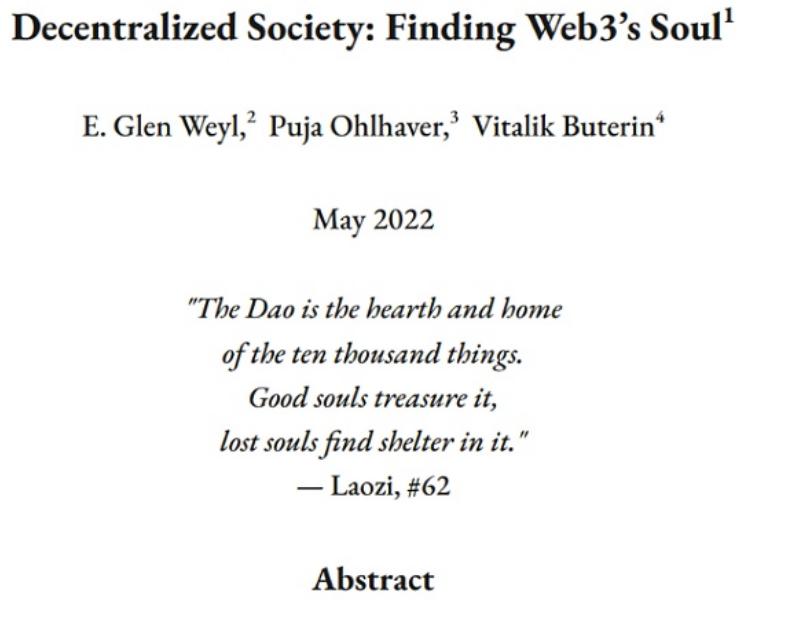
The full name of SBT is Soulbound Token, translated as Soulbound Token, and it takes the introduction of Tao Te Ching as its essence. As early as the beginning of 2022, God V gave a preliminary explanation on his Soulbound blog. The name of Soulbound comes from the game World of Warcraft. In this game, soul-bound items can only be used by the player themselves and cannot be used with Other players trade, post or give away. In the Web3 world, Soulbound Token is a token account bound to the user's wallet and is non-transferable. Any online or offline organization can recharge SBT for the wallet, but at the same time the issuer can also cancel the operation. Once the wallet is received and placed, it means that your unique label SBT is generated. The more SBT you hold, the more positive the user is. Such a cycle will form the user's own credit system, and further form the so-called user identity, which is one of the hottest social narratives in 2022: DID/reputation track.
Voltaire wrote about the word "identity" in his Philosophical Dictionary:
"Only memory can establish identity, that is, personal sameness"
"Who I am today is clearly the result of what I experienced yesterday and the imprints it left on my body and mind"
Brian Flynn, CEO and co-founder of Rabbit Hole, also mentioned that when discussing reputation DAO tools, most of the current airdrops are issuing Tokens based on people’s past achievements, rather than their future potential, so the concept of reputation has become More special and slightly precious, because it can measure how much a person contributes in the future. If we can make an accurate prediction on this point, then we can further improve the rationality and sustainability of Token distribution (if there is a Web3 search engine that can summarize all the words with the highest frequency in the year, it may not be DID in 2022. genus). Amber Research has classified four directions before, but in fact, it can be roughly understood as one is identity and management on the chain, such as Spruce, Unipass and BrightID, to prove the real you; the other is the identity portrait tool on the chain, Project Galaxy , POAP, Rabbit Hole, etc., to analyze the interactive behavior of users on the chain.
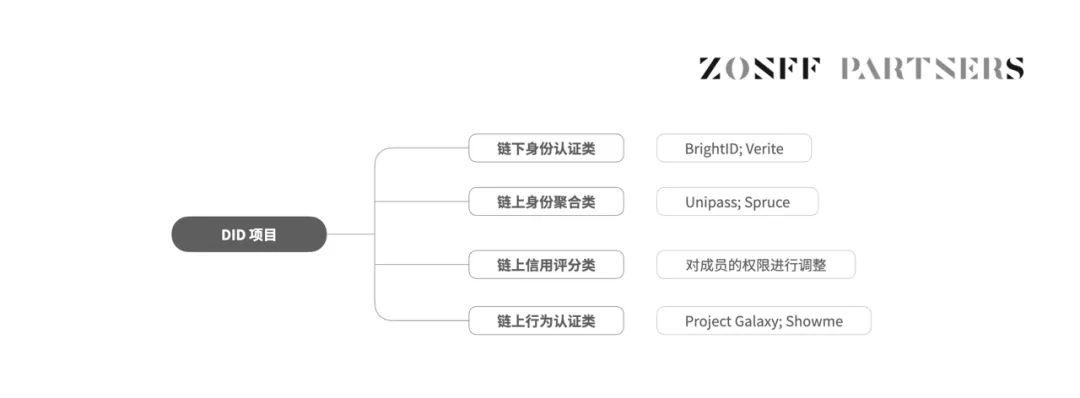
There are dozens or even hundreds of articles on the DID reputation/identity track for analysis and discussion. Here are just a few fresh projects and interesting observations in 2022:
Carv
Carv is a platform that gathers many game players. It uses SBT to empower players. In summary, it is a comprehensive platform for game Debank + project information aggregator + Social Profile layout + and game DAO identity management. Reputation is formed based on wallet data, and the game credentials of game players are accumulated to form game identity/reputation. There is an asset information display platform related to the history of game identity (Target: Gaming moment is lasting forever). And in the future, the player's game history data of Web2 will be linked, and the on-chain and off-chain will be combined to form a visual display platform of multi-dimensional game history information on the toC side. By doing tasks and issuing SBT badges, players can better calculate game level scores , For game studios, it can better match players for airdrops, distribute activities, attract new players or select players to increase retention and achieve effective community growth.
Dequest
DeQuest is also a use-case-specific project that aims to create a reputation protocol for gamers. Currently V1's products are building identities through a multi-chain, cross-metaverse mission platform to verify the achievements, activities, behaviors, and skills (SBT) of different metaverse participants on and off the chain using Soulbound NFT. Features automation, communication and progression systems for both gameplay and guilds. The card-based test of Quest has the nature of making money while learning and playing. It is helpful for the introduction of initial users and focuses on certificates. It is two different dimensions from Carv’s on-chain analysis, which is more focused on Game history data.
The future design of V2 and V3 is the product form closest to Steam. A relatively complete Steam product should have: 1) There is a cross-chain game entry (game access attribute); 2) There is a forum section based on each game, In the future, tooling (game reviews attribute) can be governed around DAO tools; 3) There are SBT-related tasks or gameplay modes that allow users to continue to upgrade and become addicted to unlock new things, retain the active transformation of the platform, and at the same time give full play to social interaction like dressing up a QQ show And show off function, which is helpful to the accumulation of platform traffic (game social attribute).
Project data: beta.dequest.io - launched since June 4th, Beta users: 3000+, more than 20 k+ participated in the "Minting Your Soulbound NFT" activity.
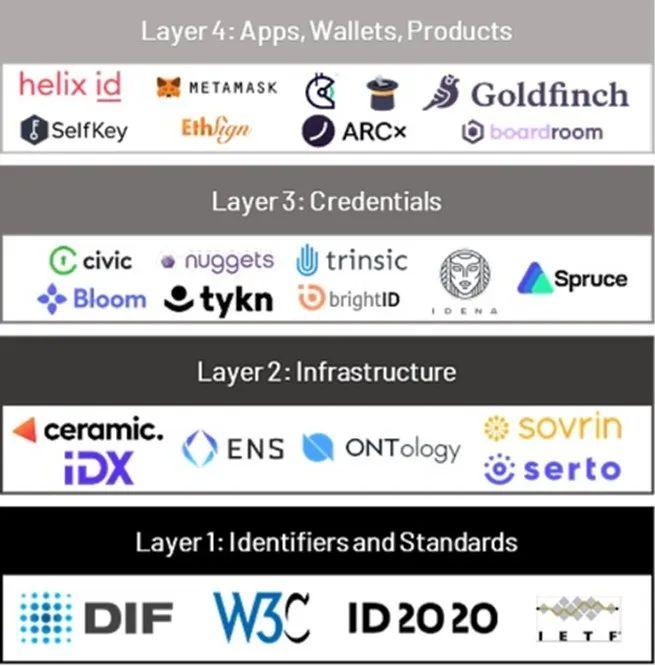
In a word, when there are more refined personalized products and communities that define user portraits and behaviors, the problem of single user portraits in the previous SocialFi 1.0 has been solved. The project party relies on loyalty programs, credit scores, users who hold active NFTs can have priority access to the curation rights of NFT project activities, holders of high-level NFTs can participate in the first batch of casting discount activities for new NFT projects and other personalized governance solutions, It has attracted a large number of new traditional users, and the stickiness and retention rate of the product have also improved compared with SocialFi 1.0. At present, the greatest value of SBT lies in the accumulation of a large amount of data, but many data that cannot be quantified in the first place will only be developed, used and paid for if they can generate commercial value.
secondary title
02 The value of data
In Web 3, SaaS will become a common infrastructure that anyone can build independently and provide integrated applications or API interfaces for various types of users.
The large-scale data breach incident in July 2022 can be described as a turmoil. There are even Telegram accounts that can directly track down the detailed private information of Shanghai citizens. It is extremely frightening to think about it. In fact, the incident may have been infiltrated into the drag library after the vulnerability was discovered. In early June, the U.S. Department of Commerce required that U.S. software vendors not share security vulnerabilities with China without review, which means that domestic data is likely to be completely unknown. stolen and damaged. Even if a new vulnerability is discovered in China, there is a high probability that there is nothing that can be done without the source code.
The ghost and circuit breaker incidents in 2018 mainly affected cloud service providers, and they could only be patched and repaired by manufacturers such as Intel and Microsoft. There is no particularly complete solution in China. Only by accelerating the pace of the Xinchuang industry, ensuring the autonomy and controllability of basic software and hardware, strengthening the construction of Web3 infrastructure, and improving user experience and data security, it is expected to fundamentally solve similar incidents. Under the ferment of various data events, it can be said that users' awareness of data ownership has improved to a certain extent. Traditional Internet application accounts are not owned by us. We only have the right to use, not ownership. The platform can follow it at any time. Even if you use this account to create various content and generate various data, at the same time, it is very complicated to switch between different accounts and platforms, and our identity data is still not our identity data. Just as a user, we are using the identity data defined by a third-party authority. It's time to awaken user awareness of identity and data.
The SBT mentioned above is closely related to the data. The relationship between the two is like looking at the same person from the front and the back, and the identity is the same you. It is the accumulation of data that makes the identity DID. When a person has a unique "Identifier" mark, and this correspondence is verified to be correct, a biological person is equivalent to an identity. In the end, the person's data will be "transferred" to this identity, and all relevant information including social data, geographic location, work unit, etc. will be attached to the identity. This is roughly how identity management works in the real world. And in the world of Web3, the identity of all people can be linked to identity credentials (such as transactions, owned NFT and other cryptocurrency assets) through wallet history. In this case, the data source is particularly important. It not only defines the identity of the user in Web3, but also can be combined with the real self behind the chain.
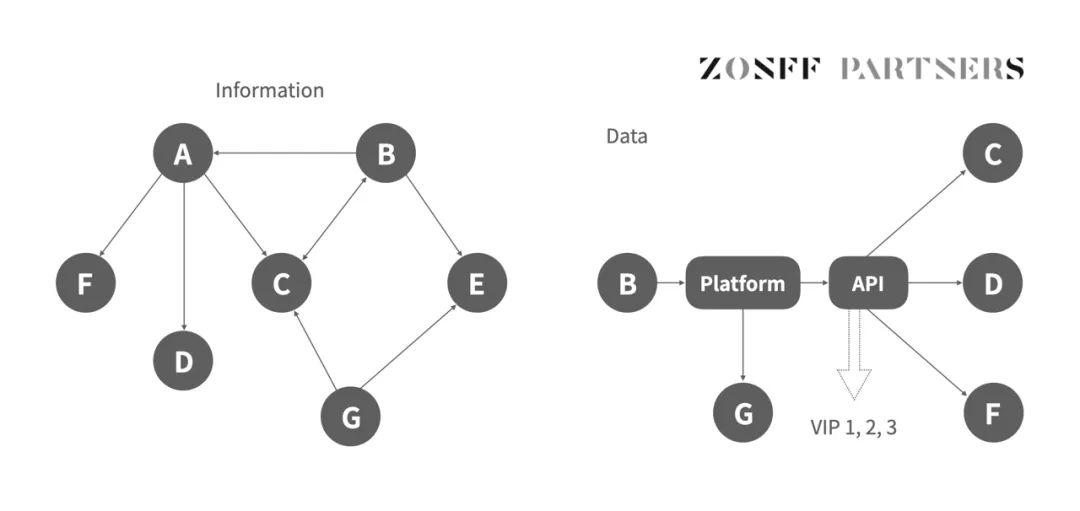
Regarding the classification of data sources, the founder of Galxe also gave a good explanation. The first category is the public data sources we often talk about. The platform provides tools, such as the need to sort out Opensea’s Contract; the second category is public For uncheckable or unrecorded data sources, Galxe helps collect data, such as the data discussed in Discord AMA and Twitter Space, who participated in what activities, or certain offline activities; the third type is private data sources (Private Data), For example, the data inside the App, search data, what you and I clicked, this part is not yet open. A large amount of data generated in the process of Web3 interaction has no other value except for the contribution of personal identity credentials. Web2's applications will also analyze big data based on users' usage habits, and then accurately push advertisements to the public. And what can the on-chain data of the blockchain do for the application? Here, let's discuss the fresh projects and different observations of several data categories in 2022:
Port 3
The goal of Port 3 is to become an open and transparent data middle layer, a gateway for social data (Social Data), emphasizing that users own their own data, which is reflected in two aspects: privacy protection and economic incentives, users can share data in Port 3's system to obtain rich returns; and eventually create an open and highly collaborative on-chain data middle layer, and then use it for other products to create a social data oracle (Social Data Oracle) to serve more users .
The specific products provided by the project are social data oracles + Web3 & Web2 social data graphs + public opinion Kanban SoGraph. Hope to provide a better platform to provide projects with business data, user analysis, multi-chain analysis, better airdrops and other precise delivery. At the same time, due to the lack of better and more accurate governance tools and more granular users in the DAO community Portrait analysis, Web3 builders have made contributions to the construction of various DAOs, but this contribution cannot be directly bound to their identities on the chain; or, due to the lack of combined analysis tools for on-chain data and off-chain data on the market , Port 3 can be dedicated to building a data analysis platform that serves C-end users for specific tracks and projects, allowing ordinary users to obtain information channels to understand what is Trends / what can be followed / what is worth participating in to obtain benefits, etc. .
Aspecta
Aspecta is a digital identity ecosystem across Web2 and Web3. By applying AI technology, Aspecta ID is a precise scene-oriented and interactive electronic identity. Aspecta ID is based on on-chain and off-chain data, including GitHub, Stack Overflow, Google Scholar and Twitter and different The blockchain enables holders to demonstrate achievements in the cloud and on the chain, such as "insights" quantified under thousands of skill dimensions, and "highlights" qualitatively measured over hundreds of experience dimensions. The value of this matter can be compared to the Internet 30 years ago. At that time, there was only one IP address, and it was impossible to do search, advertisement recommendation, recruitment, social networking, etc. When there was more user information, these applications appeared.
Project data: At present, more than 130,000 users have aggregated identities through the authentication chain and discrete accounts off the chain, and completed the pre-registration of Aspecta ID.
Chainbase
Chainbase is a Web3 developer platform. The middleware platform provides multiple services, including developer tools such as multi-chain nodes, data query, real-time indexing, and application monitoring. It provides multi-chain data and node APIs, and supports developers to write their own SQL generates a custom API. The data in the initial form needs to be decoded and multi-chain data structured before data query and indexing can be performed; at the same time, developers need to constantly build their own nodes and the cost is too high; the solution provided by Chainbase can reduce the developer's Web3 application Access and other industry pain points are mainly compared with traditional Web3 API third-party suppliers to meet the long-tail needs of the project party. Chainbase’s custom API products are not expensive. After the API migration, the Node service will naturally be migrated come over.
Project data: Currently, the Beta interface in July is fully available for developers and the middle layer, with more than 80 billion Transaction data, more than 200 active developers, and more than 3 million API calls per day.
All in all, with the accumulation of more and more data on the chain, there will be more potential scenarios for SocialFi 2.0 in the future, such as Web3 intelligent airdrops, IDO, DAO governance, but in the short term, social behaviors of users will still occur. In Web2, based on this contradiction, in the future, Web2 & 3 data may be combined to collect cross-platform social data (Social Data), so as to be used in Web3 application scenarios. There is a unified Universal ID, and the combination of on-chain and off-chain data is still a separate identity in two parallel worlds.
secondary title
03 The Rise of Social Protocol Ecology
“It provides the infrastructure for community members to curate digital credentials and contribute to the data network.”
According to the 2022 We are social report, there are 5.32 billion mobile users worldwide, 5 billion Internet users, and 4.65 billion active social media users, accounting for 58.7% of the global population. Among them, applications with a high concentration of Crypto such as Telegram have 500 million global users and 80 million daily active users; Discord has 300 million global users and 150 million monthly active users; Twitter has more than 1.3 billion registered users and 330 million monthly active users. , There are more than 332 million tweets related to NFT worldwide, which is 17 times that of "home office". According to new research from GWI, Internet users worldwide now spend an average of 6 hours and 53 minutes a day online. 64% of Gen Z Internet users use the Instagram platform on a daily basis, followed by WhatsApp (59%) and Facebook (45%). Social networking is the rigid demand of almost every user. The exposure rate (Presence) of Web3 has gradually increased in 22 years. According to the statistics of a16z, there are roughly 30 million to 50 million Web3 users this year. With the emergence of new protocols in the second half of the year and the actual With the increase in the number of real users, there are some new trends in decentralized social networking.
In July 2022, Farcaster, a decentralized social underlying network, completed a financing of US$30 million, led by a16z, a well-known crypto venture capital firm, with participation from Standard Crypto and Coinbase Ventures. In August, Satellite IM, a decentralized communication protocol, completed a $10.5 million seed round of financing, led by Multicoin and Framework Ventures, with participation from Solana Ventures, Hashed and other institutions. The emergence of the two seems to have broken the financing deadlock of some decentralized social tracks. At the same time, Galxe issued a document announcing that its Galaxy ID users exceeded 2 million, CyberConnect registered users have reached 1.4 million+, and 70+ projects have implemented APIs Access, the Lens ecosystem, which has emerged in 21 years, has developed more than 50 new DApps in 22 years. In 21 years, Lens had problems such as frequent gas consumption, Layer 2 capacity, and URL-based NFT content storage that were criticized by everyone. In the second half of 22 years, it has improved, and new DApps have also become larger than before. Its functions and multiple combinations support modular development and expansion, give full play to the cooperation advantages of DAO, light operation, minimize the governance on the agreement, and pay attention to the ability of product creation and cash flow. With the further transformation of Lens, we believe more and more that the future SocialFi 2.0 is the logic of Protocols, not Platform.
Here are a few fresh projects in the social graph class in 2022 and our observations:
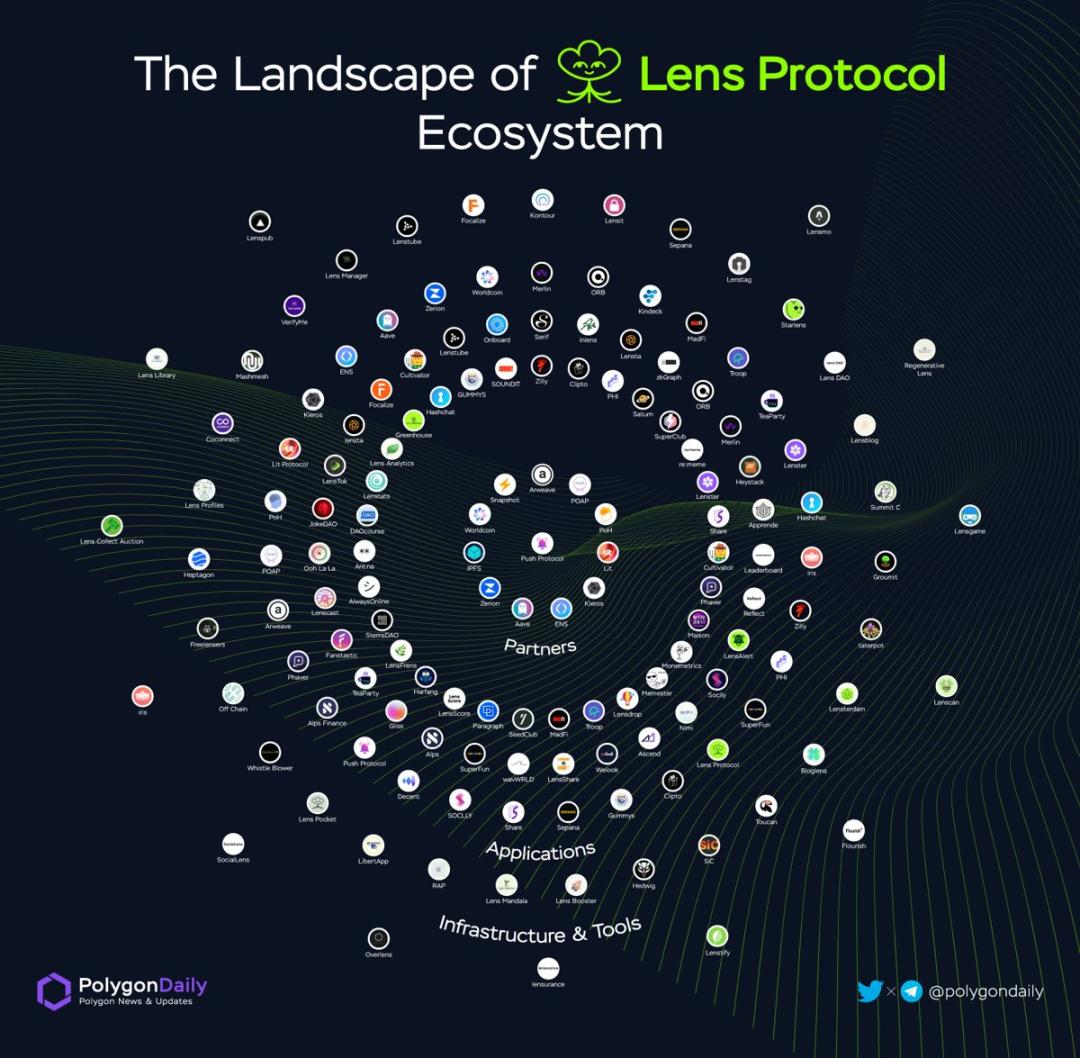
Lens
Lens is a well-known social protocol in the industry. The ultimate goal is to hope that users fully own their social network data and can bring the data to any application built on the Lens protocol. The social relationship generated by its working scenario is very different from CyberConnect, and the granularity is also different. The main reason is to bind the relationship together through Mint NFT. After the increase in users in the future, it will test the Lens protocol’s ability to process user volume and store content. . At the end of 2022, a Bankless video was deleted on YouTube. For this reason, they wrote a narrative article to describe the magic of Lens, the developers and the innovation of the user experience layer.
The inflexibility and centralization of YouTube leaves creators with no choice but to use YouTube Studio to manage their monetization, analytics or schedule playlists. At the same time, YouTube viewers are forced to use one method to consume content. Lens solves this problem by decoupling authoring and consuming tools. Developers can build applications by plugging in and using various Web3 and Web2 tools, or use data on-chain and off-chain, all of which are interconnected through the LensAPI. Project data: As of now, Lens Twitter fans have exceeded 180,000 at the beginning of 22 years to 220,000+, and its Lens Protocol Profiles NFT has accumulated more than 99,000, and its monthly active users are about 35,000. Relayed transactions processed through Lens' GAS-free API relay since June totaled 7.9 million, or about 4% of all transactions on Polygon. Note, since not all Lens apps use this API, the true number of all Lens transactions will be higher!
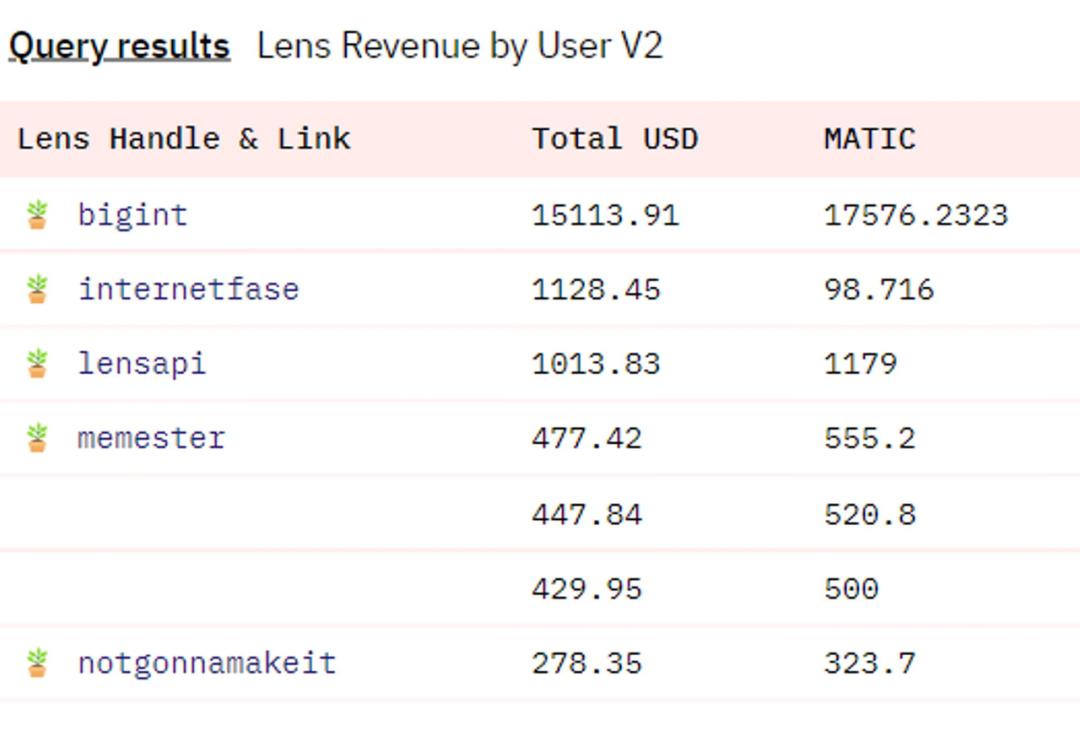
Lenster
Lenster is a representative project in the Lens ecology, and it is also the earliest and most successful project in the ecology. Lenster has implemented a blog site similar to Facebook's application, and fully applied the composability function of Lens. For example, if you create your own account on Lens and have 20 fans, it means that 20 people choose to leave a follower NFT on your personal profile. Assuming that Lenster decides to ban your account in the future, it may be that you have violated a certain Some content moderation rules, but you will not lose these 20 social capital, they will continue to exist in the underlying Lens protocol database of Polygon's immutable smart contract, and will not be affected by your social graph in the application Disappear and disappear, and at the same time, if you jump to another application Phaver on the Lens ecology, your social capital still exists and has followers NFT to convert and operate each other. This is really a great invention! The social capital migration of the three major value propositions of Web3 social mentioned at the beginning of this article has been realized.
Project data: At present, the number of daily active users of Lenster has reached 1 W+, and it is growing rapidly.
Phaver
Phaver is a decentralized share to earn social application, and it is another large client-side content social DApp on Lens. Phaver combines elements of x to earn like Twitter, Reddit and Axie & Stepn to deliver a rewarding social experience where the social angle generates real value through content creation and curation, making this model more sustainable than many others.
Compared with the crude attention algorithm and net asset value algorithm of SocialFi 1.0 before, Phaver's content and social quality have always been very high, and its incentive model is very unique. Users can obtain token incentives by improving the experience of others, publish high-quality content, discover high-quality content, review Information, consuming tokens to improve your own experience, such as post pledge, subscribing to paid content, or posting certain NFT-related topics can only be posted by NFT holders; Phaver’s value capture strategy is shared in a simple way Any Web2 content and get the advantages of Web3 to bridge the gap between the old and new social methods. In Phaver, the quality of the content and the creator's income are determined by the amount and time of pledged tokens by other users, and the content is uploaded to the chain in a simple way, becoming Applications with ownership and native tokens. This project is one of the best projects in Lens in terms of user traffic, content output, and product quality completion.
Project data: As of now, it is about 10 w + post, 10 k downloads on google play, 95% of users are recommended by existing users, and the return rate is as high as 30%. The data in the bear market is very impressive.
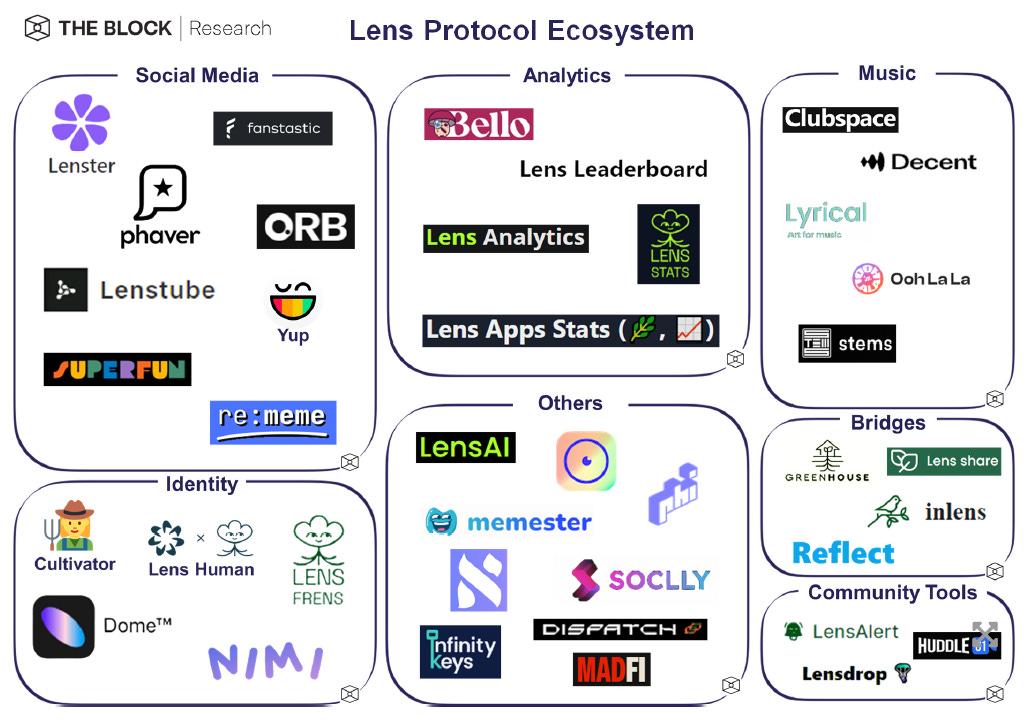
Farcaster
Another relatively heavy social protocol in 2022 is Farcaster, which was born from former Coinbase executive Dan Romero and another former Coinbase executive Varun Srinvasan. The two began to cooperate in 2022 and proposed an RSS + idea. It is an underlying application protocol for building a decentralized social network. It supports developers to build many clients on the network to achieve sufficient decentralization. It can support many clients like a mailbox.
Its underlying logic is very similar to that of Lens Protocol. Users can freely migrate social graphs and identity information among various applications. Users always have the relationship with their audience without being restricted by applications. Developers are also free to build on the network. Apps with new features. The project mainly uses On-Chain Registry and Off-Chain Hosts to complete the storage and reading of user information. Project data: As of December 2022, Farcaster has a total of 6,700 users, with an average monthly active user of 3,500. The team plans to open source the Farcaster Hub data and API by January 2023 and migrate to the Ethereum mainnet by February.
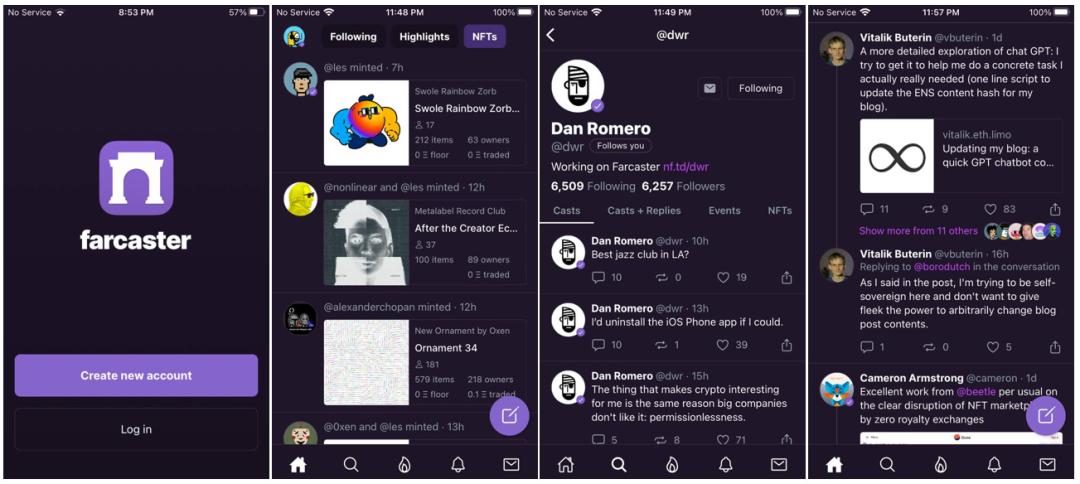
In a word, the vigorous development of social graph protocols such as Lens has partially solved the two major problems exposed by SocailFi 1.0 before, and realized the positive cycle of user data right confirmation, composability and value capture. Users no longer need to worry about losing content, fans and income due to algorithm and policy adjustments of individual platforms, they have their own account data and enjoy the benefits. Moreover, as more and more ecological projects such as Nostr, Orbis, etc. bring more users and traffic, more developers come to the platform to combine better Dapps, in other words, better content promotes more The arrival of more developers attracts more users to join. Of course, the current protocols are relatively independent and have their own ecosystems, and social assets cannot be migrated independently of each other, which may form data islands. In the future, the battle for social protocols may not necessarily be the winner. Maybe SocialFi The pattern of 2.0 will be a situation where the three pillars stand together and a hundred schools of thought contend.
SocialFi 2.0 in progress
There is no problem with the meaning and value of SBT itself in 2022, and the implementation of Web2 data on-chain, content monetization, creator economy innovation, social graph and real world integration and empowerment has enriched decentralization Social ecological diversity, after the ups and downs of SocialFi 1.0 and the year of 2022 when the agreement is king, we would like to call the period of the rise of Web3 social projects the SocialFi 2.0 era in 2023. Here is a preliminary forecast for the development direction. After the underlying expansion, storage, security and privacy issues of the entire blockchain industry are resolved, the application layer is expected to bloom everywhere, and at the same time there will be a relatively unified SBT-related protocol rules. .
Double structure of internal and external circulation
It will take a long time for Web3 to truly transition to an era where users and services support the profit model.
In 2022, the development of SocialFi 1.0's social graph (Social Graph) protocol layer + data oracle + DID paved the way for SocialFi 2.0. Data confirmation will gradually return to the user itself and can be stored permanently. Data Storage has a new paradigm. Data and on-chain activities are open and transparent, the value of structured data is slowly being realized, and new protocols are beginning to accumulate users' social capital and realize migration; these will help SocialFi 2.0 in 2023 present a new pattern.
The problems of Web2 social networking mentioned above have been partially resolved through the development of SocialFi 1.0 (social relationships are attached to the platform + created content is stored on the platform + user data is owned by the platform + profit model is allocated by the platform + creator value cannot be reflected) , the three major value propositions of decentralized social networking have also been met and developed to a certain extent. Decentralized social networking in 2023 will be clearer, and the narrative will be more concise and clear. It will form a bottom layer centered on social graph protocols, data storage, and privacy computing, and a social network centered on creator economy, IM instant messaging, and DID/reputation There are two major market patterns in the application layer.
Inner loop: bottom class/ToB side
The three underlying layers of SocialFi 2.0: data layer, protocol layer, and privacy layer. Most of the bottom-level projects are based on the ToB model, and the investment strategy is more based on SaaS tools and platform logic, focusing on the internal structure, oriented by the core technology of the blockchain/decentralization idea, see the project Consideration indicators: 1) Focus on technology and moat; 2) Look at the development time; 3) Observe the team's build ability and technical ability. And SaaS sales are somewhat of a one-man growth hacker. Do everything possible to obtain front-end lead business opportunities, constantly optimize your own (project party) delivery methods, and then continue to optimize your own customer portraits that are easy to order during the ordering process, and regularly review your funnel conversion rate.
The protocol layer of the social graph focuses on: the idea of making an agreement is very different from that of making a product. The product focuses on the level of function, service and business logic, and considers the interaction between the product and the user; while the agreement is the agreement and other agreements or standards. The rules of interaction and coordination between them, or the logic of calling each other between protocols. Both centralized and decentralized social media platforms utilize some type of social graph and allow users to interact with each other on the front-end platform. Since the user relationships accumulated by traditional social platforms are not their own, it further makes it impossible to migrate the social relationships between each platform, and it is even more difficult for creators to accumulate influence and obtain economic value. With the development of major Protocols in the future, It is perfect and can help to build a graph database of community relationships on the chain. Objective data is the easiest information to capture on the chain, and can be associated with personal identities through wallet history records. The problem of cross-platform and cross-network data storage can be solved. The future Identity management can realize transferrable, value circulation is no longer difficult.
Outer loop: application class/ToC side
Most of the application projects are based on ToC, and the investment strategy is more product logic and user-oriented, relying on external feedback, driven by scenarios, and demand-oriented. Look at the project consideration indicators: 1) Demand, and insight into users ; 2) look at the narrative; 3) the logic of the team product; 4) operations and BD resources. According to the classification of traditional social use scenarios: social includes communication, friend matching, social media, and UGC community. The key points of product design and the value delivered to users in the four scenarios are different, different from traditional social, and decentralized From the perspective of demand, it involves the authentication of asset attributes and identity information on the chain, the graph of social relations on the chain and the sharing of social content, the scene of crowd interaction and chat, and the need to show off NFT constitute the creator economy, IM instant messaging and DID/reputation are the core ToC products. Social phenomenon-level C-end products have not yet appeared, and should be built first and then applied. In 2023, with the popularization of Web3 social needs and the awakening of user privacy protection awareness, and the three prerequisites of willingness to pay for Web3 social networking in the future, C-end products will become phenomenal. products are expected to appear.
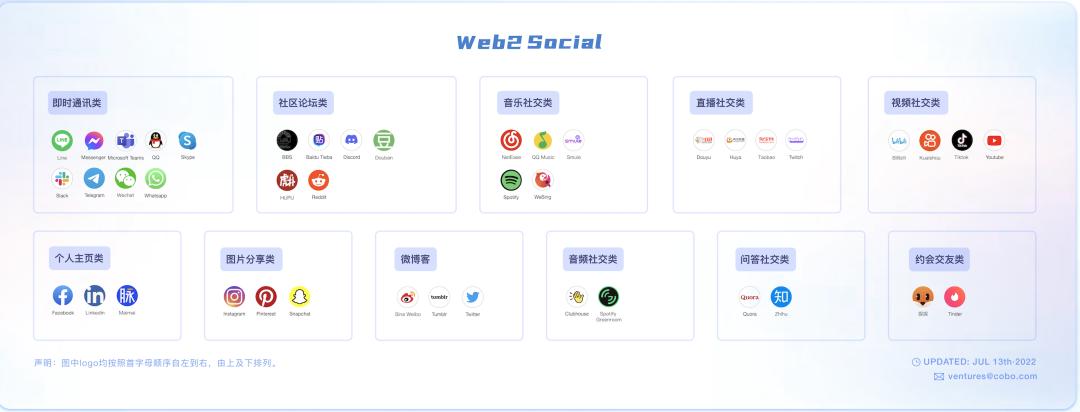
Opportunity Level Considerations
Newton once said: If I see farther than others, it is because I stand on the shoulders of giants.
The inflection point of Web3 social networking lies in the emergence of more complete underlying infrastructure such as data rules/protocols. Only after the infrastructure of social data is developed will it bring the traffic entrance of the C-side application layer. So SocialFi 2.0 continues to pay attention to the changes brought by the social graph to the industry. DApp and Decentralized Protocol realize the interconnection of data, assets, and protocols, but people are isolated, so the social graph protocol can make up for this deficiency. However, the current social graph on the market has its own protocol ecology. People are not isolated, but data is isolated. SocialFi 2.0 will have a lower-level standard between protocols. In the future, not only the social capital within the protocol can be converted, but also the protocol The social relationship and data between social networks can also be migrated and interoperable.
A finer-grained and more accurate database will bring in user traffic at the application layer. Whether it is Web2 or Web3, people need to be defined, labeled, and find communities and preferences. Credentials exist in our daily life and can represent your identity, your resume, and your interactions. Refined user behavior can provide Web3 applications with precise management of users, precise delivery of project parties, precise research of data analysis of community projects, etc. SocialFi 2.0 continues to pay attention to the opportunities of DID in specific subdivided scenarios, such as the user identity and reputation system of the wallet itself, and the opportunity of the DID Profile of the social platform and the decentralized game identity of the game platform after the C-side application starts.
SocialFi 2.0 will have more tool projects to help DApps improve user experience UI/UX. The problem of user retention is at the forefront of Web3 social projects. Even though data ownership and privacy issues are the concerns of Web2 users and the issue of benefit distribution is the concern of creators, the product itself is poorly designed + the user experience is zero + no one used it in the early days. Users will not be sticky. The key to Web3 social products is the accumulation of early growth and network effects. The traditional user experience is divided into four distinct layers, each of which is a long and winding path of advancement, considering a popular app on a standard smartphone. The app's actual UI is just the last element in a long chain of experiences that starts in the real world, travels through countless physical spaces, into digital interactions, through a whole bunch of different hardware and software, and finally stops at a button someone else designed superior. Only DApps with a better user experience design will attract more traditional users onboard.
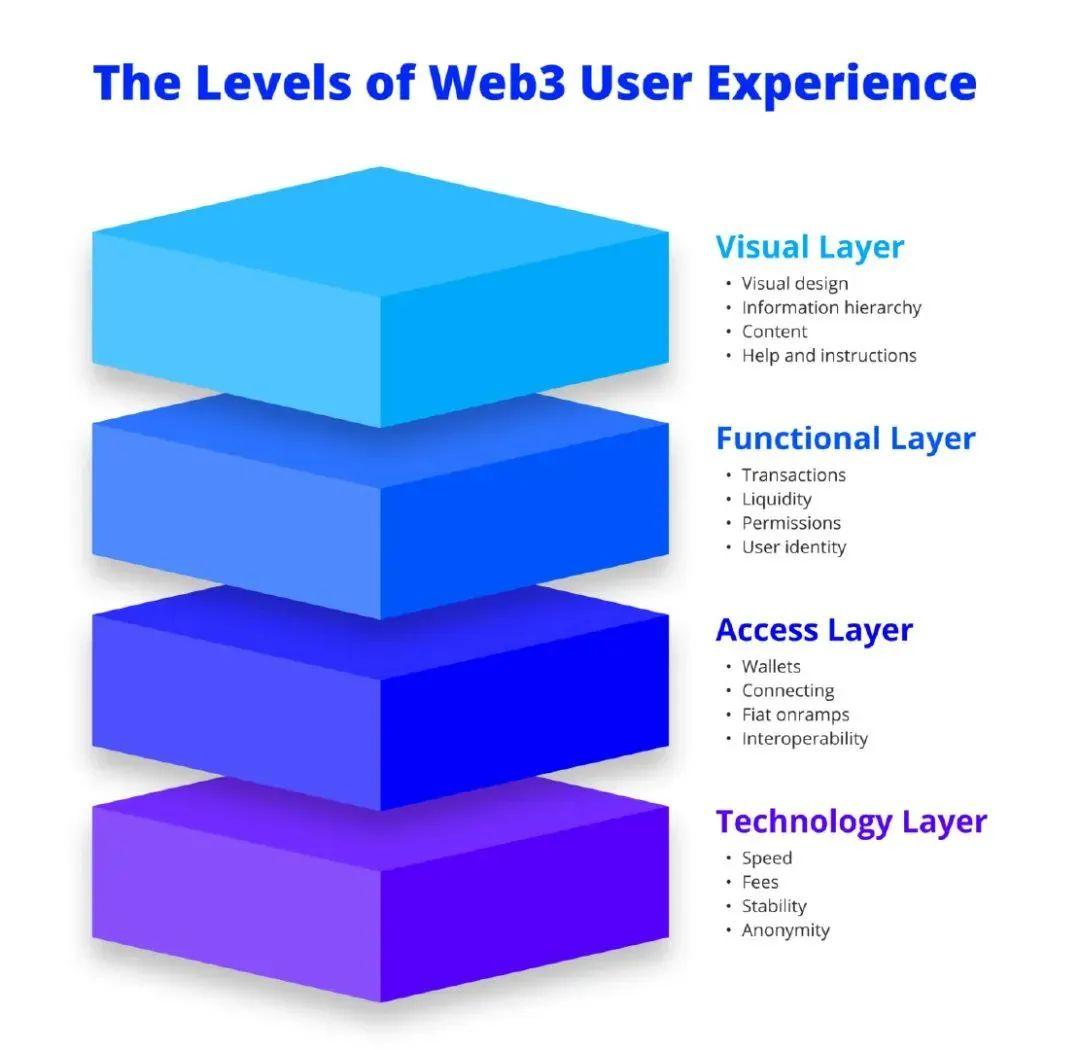
In SocialFi 2.0, there will be more decentralized media content platforms (Decentralized Social Media for Creators) around the creator economy. The core is to judge whether the product has enough beneficial effects and sustainable Tokenomics to retain core users + high quality creators and form an endogenous economic cycle. The creator economy is actually a very interesting topic, and it is also a big track in the social field, because the creators it revolves around are not only content creators or writers on social media platforms, but also include the current NFT-related For art creators, game producers, etc., it can be said that the creator economy is the fusion of SocialFi + GameFi + NFTFi. For content creators (Content Creator), their new demand or value embodiment in Web3 is not blockchain decentralization The ownership endowed is more vertical and personalized free creation and permanent storage of content, data attachment rights, and built-in royalties, which bring more stable income to creators, without the need for platform algorithm recommendations, and the value can be quantified. Therefore, new projects in this field focus on Creator and Content, starting from the underlying protocol, building a new media protocol or content distribution protocol with Creator as the core, and realizing the redistribution of creator value.
The current social track still lacks a content search server. Information retrieval, index recommendation, and precise positioning of message content can see the content that users want to see hierarchically like traditional Web2 users (Twitter may directly become a content retrieval and classification platform in the future. function).
IM communication protocol tools may explode in SocialFi 2.0. The scene of crowd interaction and chat may gradually change from one-to-one and one-to-many to many-to-many scenes, similar to the demand scene of real-time online chat interaction in Clubhouse or Twitter Space. Messages in specific scenarios will be in demand. The last wave of communication projects such as Blockscan Chat has been deserted. It is difficult to expect pure communication products to be launched in the short term. However, if the product form is different, such as XMTP, Satellite IM and other Web3 Communication protocol projects, as well as Notifi, Dialect, Swapchat, Beoble and other products, will be in demand in the future. IM is not limited to communication tools, it can be integrated in various apps to realize communication between users and platforms. Communication with merchants on the Internet has long been a problem. Decentralized applications are expected to achieve communication with service providers in the new year, and future communication projects can realize NFT buyers and sellers to negotiate prices, and DApps can have bots or live Customer Service to guide user customer service, group chat has a common Bank Account bank account, DAO can also notify their community voting governance and other functions.
Note: The projects mentioned in the article do not constitute any investment advice. The article only represents the current opinion of the author, not Zonff Partners. The information and opinions published in the article may no longer be accurate due to changes in the situation or other factors after the publication date.
Note: The projects mentioned in the article do not constitute any investment advice. The article only represents the current opinion of the author, not Zonff Partners. The information and opinions published in the article may no longer be accurate due to changes in the situation or other factors after the publication date.
Information sources and references:
Figure 1: The original text of "Analysis of the Internal Mechanism and Breakthrough Path of the "Web3 Paradox""《Analyzing the "Web 3.0 Paradox", finding its mechanism and breakthrough point》It is very worth recommending to read, it gave the author a lot of inspiration and resonated
Figure II:Web3 Social on the Road to Mass Adoption
Figure 3:"Comprehensive Analysis of Web3 Social: Deep Chain Socialization Will Be Possible"
Figure 4:"Digital Identity in web3 - Decentralized Identity: did"
Figure 5:《The Status of Web3 Social》
Figure 6:《Unpacking Web3 Social》
Figure 7: "Summary: The Four Layers of Web3 User Experience" is also very worth reading. It summarizes the factors and development process that generally need to be considered in product UX/UI. Link to the original text:《The multiple levels of web3 UX》


